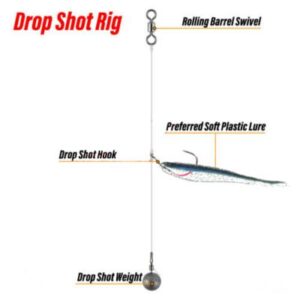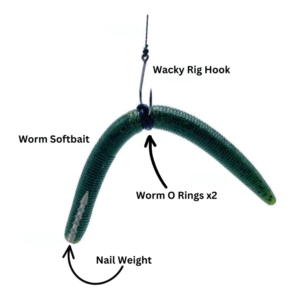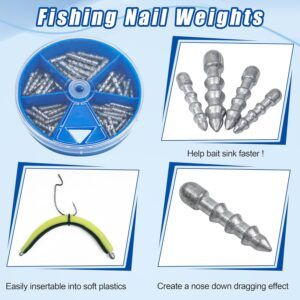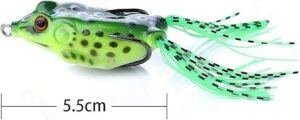Refined Finesse Fishing Techniques For Big Bass
Refined finesse fishing techniques for big bass require patience, skill, and a willingness to embrace subtle presentations. I have spent years learning the art of finesse fishing and found that a measured approach can often yield better results than power fishing alone. My adventure taught me that paying close attention to lure movements, water conditions, and bass behavior makes a significant difference when targeting these intelligent fish. Every moment on the water brings a new lesson, and understanding these details can truly give a boost to your overall fishing experience.

Essential Techniques for Finesse Bass Fishing
Finesse fishing is all about engaging the fish with realistic and natural presentations. Instead of relying on hard casts and aggressive retrievals, this method emphasizes organic movements and careful lure selection. I use several refined techniques, including heavy Ned rigs and hover rigs, which allow me to work deeper waters with optimal precision. The approach is very much about fine adjustments and reading the environment to decide which setup is very important for the day.
The heavy Ned rig involves using a heavier jighead paired with Ned-style baits. This setup lets me fish in deeper water or when bass are under pressure from previous fishing events. The weighted jighead helps sink the bait faster while still allowing natural movements that attract big bass. Over time, I have learned that minor tweaks in weighting and presentation can change the entire outcome by giving me more control even in less-than-ideal conditions. Experimenting with different weights and shapes of the bait has taught me to appreciate the finesse required in each moment on the water.
The hover rig is another technique that has proven effective. By enabling soft plastics to hover in the water column, I can create an illusion of live prey. This method is especially useful when bass are wary or have grown used to common presentations. Realistic soft plastic baits are vital in this technique because they mimic the natural movement of bait fish with a gentle, enticing motion. With this approach, I often slow down my cast and adjust the pause intervals to let the lure really settle before moving on.
There is also an added benefit when you explore different techniques in varying water conditions. The flexibility of these methods means you can always adjust your tactics based on the responses you observe from the bass. By experimenting with the heavy Ned rig and hover rig in different depths and temperatures, you can really give a boost to your chance of success. It is all about constant observation and making micro adjustments throughout your session.
Getting Started with Finesse Bass Fishing
Before you head out on the water, it is important to understand the basics of finesse fishing. I started my adventure by focusing on quality gear and developing good habits in reading water flow and recognizing bass behavior. My approach always starts with careful research, steady practice, and a determination to improve with every outing.
Begin with quality rods and reels that provide sensitivity and accuracy for finesse presentations. Lightweight equipment helps you feel the smallest nibble from a bass. Pairing this with soft plastic baits designed for lifelike movement often leads to much more successful fishing outings. In the early days, every practice session helped me build confidence and master the art of subtle presentations on the water.

Here is a brief guide to getting started with finesse bass fishing:
- Choose the Right Gear: Start with a sensitive rod, smooth reel, and a line that works well for finesse techniques. Quality equipment makes it easier to notice the slightest bites from bass and helps maintain the natural presentation of your bait. Investing in good gear is very important and pays off in the long run.
- Learn the Techniques: Understand the differences between heavy Ned rigs and hover rigs. Spend time practicing how these techniques influence the behavior of your bait in different water conditions. Every adjustment you make can have a big impact on your success.
- Observe Water Conditions: Weather and water clarity play a major role in lure performance. Look for calm days when water is clear, as natural presentations perform best in these situations. Observing these conditions closely can give you a better sense of when to cast and when to hold back.
- Practice Patience: Finesse fishing is not all about immediate rewards. I discovered that waiting patiently for the bass to strike often results in more fruitful fishing outings than constantly chasing every movement. It is a test of both skill and temperament.
As you get more comfortable with these basics, don’t hesitate to experiment with slight modifications. Over time, these subtle changes build up and can change your overall technique, allowing you to tailor your approach to just about any situation encountered on the water.
Challenges in Finesse Bass Fishing
Like any fishing method, finesse fishing comes with its own set of challenges. I have encountered situations where even minor adjustments in technique produced large differences in results. Being aware of these challenges is essential in refining your method and ensuring a steady improvement over time.

There are several factors that come into play when pursuing refined finesse fishing techniques:
- Heavy Ned Rigs: Choosing the right jighead weight is very important. If the jighead is too heavy, the bait might sink too quickly; if it is too light, you may not reach the deeper water where big bass hide. I often experiment with different weights until I find the sweet spot for the day. This process requires both observation and adjustment, and it is a very iterative process that treats every fishing day as a new lesson.
- Hover Rigs: Maintaining the correct depth for hover rigs takes practice. The objective is to let your bait hover just at the right level so that it mimics injured or struggling prey. I regularly adjust my retrieval speed and pause at key moments to achieve this effect. This careful balancing act is something that develops over time and is a critical part of a successful session.
- Realistic Soft Plastics: The quality of soft plastic baits is very important. Lower quality baits may not offer a natural appearance or movement, which can be a deterrent for wary bass. I invest in baits known for their lifelike textures and colors that appeal to bass. High-quality lures often perform far better, giving a boost to your presentation and increasing your chances of a successful strike.
- Subtle Lure Movements: In finesse fishing, details truly matter. Even slight differences in the way a bait moves through water can either attract or repel a bass. This requires a keen eye and a willingness to experiment with different presentations. Every session on the water is a chance to fine-tune your approach, and understanding these small differences is part of what makes finesse fishing so rewarding.
The challenges in finesse fishing often push me to continuously improve my technique. By learning to adjust rig weights, pause at critical moments, and switch up baits when necessary, I can consistently improve my results. Continuous practice and incremental adjustments based on immediate conditions are strategies that have proven extremely effective for me over the years.
Furthermore, embracing the unpredictable nature of fishing adds an extra layer of excitement. When faced with a challenging day, never be discouraged; instead, use each experience as an opportunity to fine-tune your skills and develop a better understanding of bass behavior.
Advanced Tips and Techniques
Once you are comfortable with the fundamentals of finesse bass fishing, exploring advanced techniques can help you target even bigger bass. I have found that small tweaks often lead to significant improvements in performance, providing an edge that can be the difference between a good day and an outstanding one.
Mastering Timing: Understanding the behavior patterns of bass is essential. I spend plenty of time studying where and when bass are most active. Adjusting my timing based on these patterns can result in more frequent strikes. Rather than relying solely on equipment, it becomes a game of timing and intuition. Watching the water and patiently waiting for the right opportunity gives you more control and insight into the underwater world.
Precision Casting: Finesse fishing sometimes demands very exact placements of the bait around hidden structures or under overhanging cover. I focus on accurate casting techniques to get my bait exactly in spots where bass are likely to be hiding. This requires not only skill but also a good understanding of water currents and natural obstacles. With practice, precision casting can become a powerful tool in your overall strategy.
Adjusting the Retrieve: When fish are cautious, a steady, slow retrieve often produces better results. I frequently pause at irregular intervals or give the bait a slight jiggle to mimic the erratic movements of injured prey. These controlled adjustments prompt a more natural attraction, and testing various speeds and pauses can be very effective in revealing the behavioral tendencies of bass.
Understanding Pressure: In waters where bass feel pressured from recent fishing events, I rely on my heavy Ned rigs for a more potent presentation. The design of these rigs helps entice bass even when they are on high alert. I often experiment with the angle and depth at which I cast, ensuring I match the very subtle cues given by the fish. This sensitivity to underwater pressure can truly make or break your success on a busy day.
Exploring Water Depths: Deeper water often hides larger bass that require a more realistic presentation before committing to a strike. In these situations, using heavier weights paired with precise retrieval techniques has proven very effective. Adjusting the rig based on water depth and temperature is something I have learned through a lot of trial and error. Consistent exploration of different depths not only improves your catch rate but also adds to your overall understanding of the habitat.
Taking your finesse game to the next level may mean constantly testing and modifying your setup as conditions change. When you commit to trying multiple setups over one session, you can better gauge the responsiveness of bass and fine-tune your approach accordingly. Every adjustment is a step up in mastering the art of finesse fishing.
Finesse Gear: What Equipment to Use
Good gear is as essential in finesse fishing as is a skillful approach. I have learned that investing in suitable equipment gives a boost not only to your performance but also to your overall experience on the water. Finesse fishing demands heightened sensitivity and supreme accuracy, and the proper gear supports these needs in every cast.
I recommend choosing a lightweight rod with enough flexibility to sense even the most subtle bite. A smooth, reliable reel that maintains consistent tension while handling light lines is really important. I often opt for high-quality monofilament or fluorocarbon lines because they provide excellent feedback during a bite and remain less visible in crystal clear water. This combination of equipment allows you to translate the small signals of a bass strike into a timely reaction.
Soft plastic baits designed specifically for finesse fishing come in a wide variety of shapes and sizes. In my experience, choosing baits that mimic the natural prey of bass, such as worms or small baitfish, tends to provide the best results. The focus is on a natural finish, and selecting baits with lifelike textures and subtle color patterns can be very important when enticing a cautious fish. The natural motion of these baits in the water often triggers a response where more aggressive baits might fail.
In addition to the rod and reel, having extra accessories such as a good pair of pliers, plenty of extra hooks, and a tackle box stocked with various baits is very important. I always double-check that my gear is in proper condition before heading out. Being well prepared not only smooths the way for an enjoyable fishing trip but also allows me to quickly adjust techniques if the situation on the water changes.
- Lightweight Rods: These rods allow for better sensitivity when it comes to subtle bites. Their flexibility helps in delivering natural presentations without overwhelming the sensation of a bite.
- Smooth Reels: A reliable reel ensures smooth line retrieval and keeps your lure moving steadily in the water. Consistency in your casting and retrieval techniques is a very important factor in finesse fishing.
- High-Quality Lines: Using less visible yet responsive lines helps you pick up on the minute signals from a bass, which can otherwise be easily missed.
- Realistic Soft Plastics: The quality of these lures significantly influences your overall success. Investing in high-caliber baits that offer natural movement can give a boost in enticing even the most cautious bass.
Frequently Asked Questions
Below is a list of common questions that often come up when discussing refined finesse techniques for big bass fishing. Addressing these questions has helped me add some details to my technique and refine my overall approach.
Question: What makes finesse fishing different from power fishing?
Answer: Finesse fishing relies on subtle presentations and natural bait movements to attract bass. Instead of using heavy power casts, this approach leans on careful technique and heightened sensitivity in recognizing the slightest nibble.
Question: How important is rig selection in finesse fishing?
Answer: The choice of rig plays a very important role. Heavy Ned rigs and hover rigs provide specialized presentations that can be particularly effective in pressured waters. Picking the right setup can be the key to reaching bass that might otherwise be too cautious to strike.
Question: How do I decide which soft plastic bait to use?
Answer: Choosing a soft plastic bait involves examining the local forage while experimenting with various shapes, sizes, and colors. The quality of the bait is very important, and I usually select those that offer realistic movement in the water.
Question: What is the best strategy to adjust my retrieve during finesse fishing?
Answer: Adjusting your retrieve should be a response to the bass’s behavior. I typically slow down my retrieve and introduce gentle pauses. These small adjustments often make a significant difference in drawing in a strike.
Bottom Line
Refined finesse fishing techniques for big bass provide an enjoyable alternative to power fishing by focusing on natural and realistic presentations. I have discovered that with the right gear, a mix of heavy Ned rigs and hover rigs, and careful attention to detail, you can greatly improve your chances of landing big bass. Spending time understanding the water and its moods, while continuously testing different setups, has given a boost to my fishing experiences time and again.
Finesse fishing requires a calm and patient mindset. It is important to keep learning and adjusting your tactics as you get more experience. A refined method not only improves your catch rate but also transforms your time on the water into a truly captivating experience. Remember, it isn’t just about the gear or the technique. It is about the countless hours spent observing nature, making slight adjustments, and truly enjoying every cast. Each day on the water offers new challenges and opportunities to hone your skills. With consistent practice and a willingness to adapt, you will soon find that the art of finesse fishing evolves into an integral part of your overall fishing adventure.
Whether you are a seasoned angler or just starting out, there is always something new to learn in the realm of finesse fishing. Keep an eye out for subtle cues, invest in quality equipment, and never hesitate to experiment. The rewards that come from mastering these refined techniques are well worth the effort. Enjoy every moment, celebrate small victories, and always be ready to learn something new on your next outing. Happy fishing!


